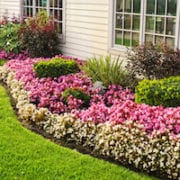What You Don’t Know About Flood Insurance Can Soak You
As many recent flood victims are now finding out, learning what flood insurance doesn’t cover can be an unpleasant revelation. Since ignorance is rarely bliss when it comes to insurance, here are some things you
need to know about the National Flood Insurance Program coverage and exclusions.
First things first, you need to understand the insurance-speak definition of flood. The NFIP page of the pueblo.gsa.gov says flooding is “a general and temporary condition of partial or complete inundation of two or more acres of normally dry land area or two or more properties (one of which is yours) caused by:
- Overflow of inland or tidal waters
- Unusual and rapid accumulation or runoff of surface
waters from any source - Mudflows
- Collapse or subsidence of land along the shore of a lake
or other body of water, as a result of erosion or undermining caused by waves
or current of water exceeding anticipated cyclical levels that result in a
flood.”
Got it? That doesn’t cover water damage caused by sewage back up, burst pipes, overflowing tubs or leaking swimming pools. For that, you’ll need to buy additional coverage through your regular homeowners insurance policy provider.
A NFIP policy will provide up to $250,000 for property and up to $100,000 for contents, which must be purchased separately. If you want or need more than that, you can buy excess flood coverage from a private insurer.
What’s Covered
NFIP property coverage extends to your home or dwelling, attached and detached garages and certain permanently installed fixtures like cabinets and appliances.
The NFIP contents coverage will take care of damages to
clothes, furnishings, books, electronic equipment, decorative items and similar
personal property.
Some but not all things in your basement are covered. These include unfinished drywall and nonflammable insulation used for walls and ceilings; electrical junction and circuit breaker boxes; central A/C units; furnaces, water heaters, sump pumps, fuel pumps and the fuel inside them; light fixtures; foundation elements and clean-up.
What’s Not Covered
- Landscaping including trees and shrubs.
- Living expenses (like renting a hotel room while your home is fixed) or business interruptions.
- Improvements and most contents in a basement. That means floor coverings, paneling, office supplies, furniture, computers, clothes, most appliances and anything else you’re storing or using in your basement.
- Money, important documents, precious metals, stock certificates and similar valuable papers.

 EINSURANCE
EINSURANCE EINSURANCE
EINSURANCE